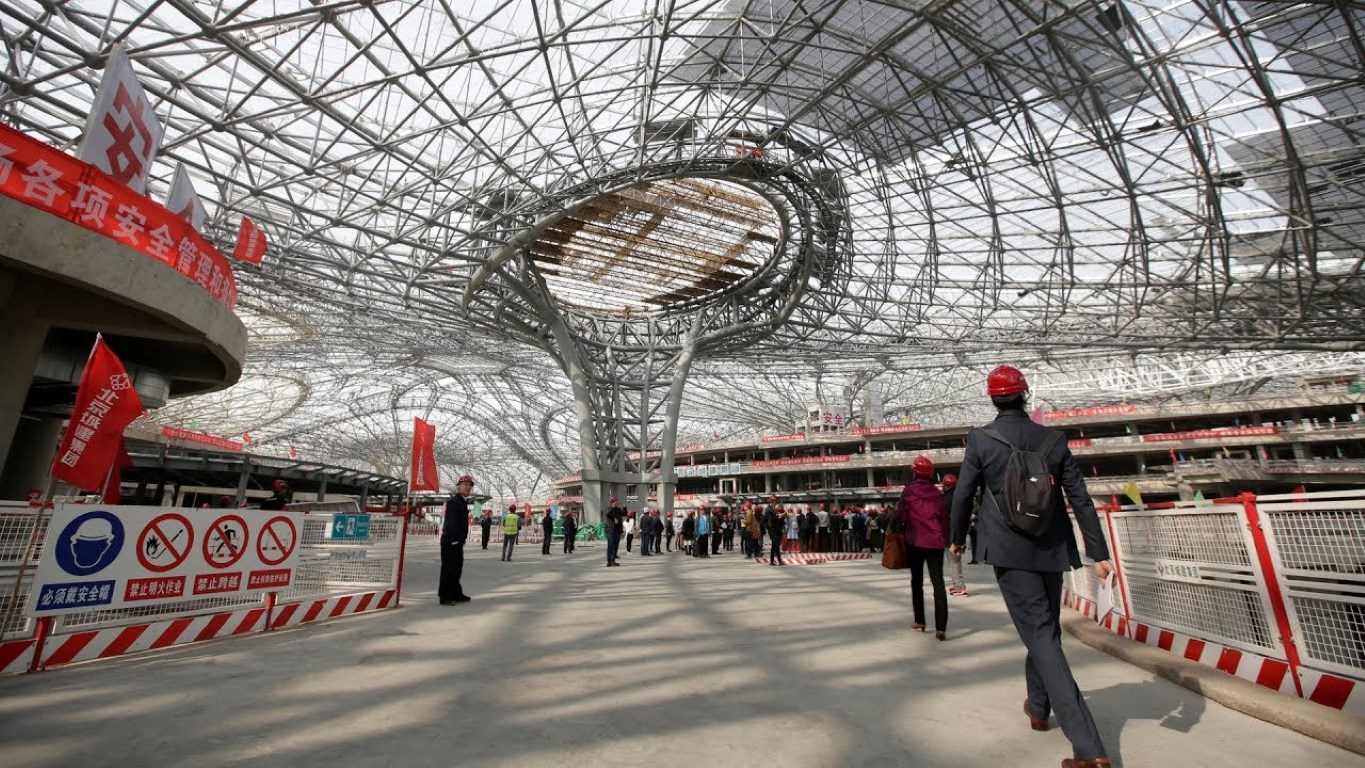Daxing Airport high on surveillance
July 19, 2018 | Expert Insights

Beijing’s US$12 billion Daxing International airport, which is designed to handle up to 100 million passengers a year at full capacity, will feature cutting-edge surveillance technology to ease bottlenecks in security and immigration screening.
The Beijing New Airport terminal is almost double the size of Heathrow Terminal 5 and on par with Hartsfield – Jackson Atlanta International Airport.
Background
Situated 67 km south of Tiananmen square , the airport technically falls in the neighboring Hebei province, though it will eventually constitute its own development zone.
Sense Time is the world’s most valuable artificial intelligence start-up. It joins Megvii and Yitu Technology in establishing a beachhead for Chinese-developed facial recognition applications in major Southeast Asian markets.
China’s goal is to become a global leader in artificial intelligence (AI) and this is quite evident in the efforts of some of its companies in facial recognition technology to deploy their applications in overseas markets.
Analysis
Chinese artificial intelligence start-up Yitu is preparing a bid to provide its facial recognition technology to the airport, while its close rival Sense Time Group is also expected to compete for the contract.
The new Zaha Hadid-designed airport is situated about 50 kilometres south of central Beijing and will help ease congestion at the current airport located in the northeast of the capital. It will also serve Xiongan, the satellite city in neighboring Hebei province created to reduce overcrowding in Beijing.
Sense Time is said to be testing similar facial recognition technology on a limited basis at the current Beijing airport, according to people familiar with the matter, who declined to be identified as they are not authorized to divulge details to media.
Started by a group of academic colleagues from the Chinese University of Hong Kong, Sense Time is the most funded Chinese AI start-up, having raised US$1.6 billion as of June, according to the China internet Report published by the South China Morning Post. Sense Time has already upgraded the IT systems of airports in Chengdu and Haikou, and at more than 30 train stations across China, so that face-scanning machines can match passengers to tickets, reducing the manpower required for the important but repetitive task, according to a company representative.
Shanghai-based Yitu Technology is also preparing a bid for contracts at the new Beijing airport, according to a company representative, who declined to go into details because talks are still preliminary. The company has tested its facial recognition technology at the current airport, he said. It also set up an office in Singapore as part of plans to export its technology to Southeast Asia and has supplied body-mounted facial recognition cameras to Malaysia’s auxiliary police.
Meanwhile, Sense Time has signed separate deals with Singapore Telecommunications, Nanyang Technological University and the National Supercomputing Centre in Singapore.
Bidding for the inner refurbishment of the airport is still ongoing, the airport’s spokesman said in a brief telephone interview, declining to specify the finalized technologies to be adopted. “Our priority is passenger experience, merging technologies into the overall environment to ensure a seamless boarding experience,” he said.
In an interview with China Newsweek in March, Guo Yanchi, the chief engineer overseeing the construction work, told the magazine that “the new Beijing airport is built for the future, on the basis of digitized and smart concepts.” The airport will utilize technologies including internet of things (IoT), cloud computing and storage, individual smart devices and virtual reality, he said.
Facial recognition uses biometric computer applications to automatically identify an individual from a database of digital images and is now being used extensively in China, from authorities spotting suspected criminals and jaywalkers to unstaffed access of luxury residential areas, from payments to car rental transactions.
Counterpoint
However, there are certain challenges. The same individual imaged with the same camera with nearly the same facial expression and pose appear dramatically different with changes in lighting conditions. The problem of face recognition can be best explained as a standard pattern- or machine learning problem.
Assessment
Our assessment is that face recognition has received significant attention because of its numerous applications in access control, law enforcement, security, surveillance, Internet communication and computer entertainment. We believe that the state-of-the-art face recognition systems yield satisfactory performance only under controlled scenarios and might degrade when confronted with variables such as illumination and pose variations, occlusions and expressions. We feel that the limitations of face recognition technology were revealed soon after the Boston marathon bombing. We also feel that the technology can be used in airports as one of the tools for identification, but this must not be the absolute determinant.








Comments